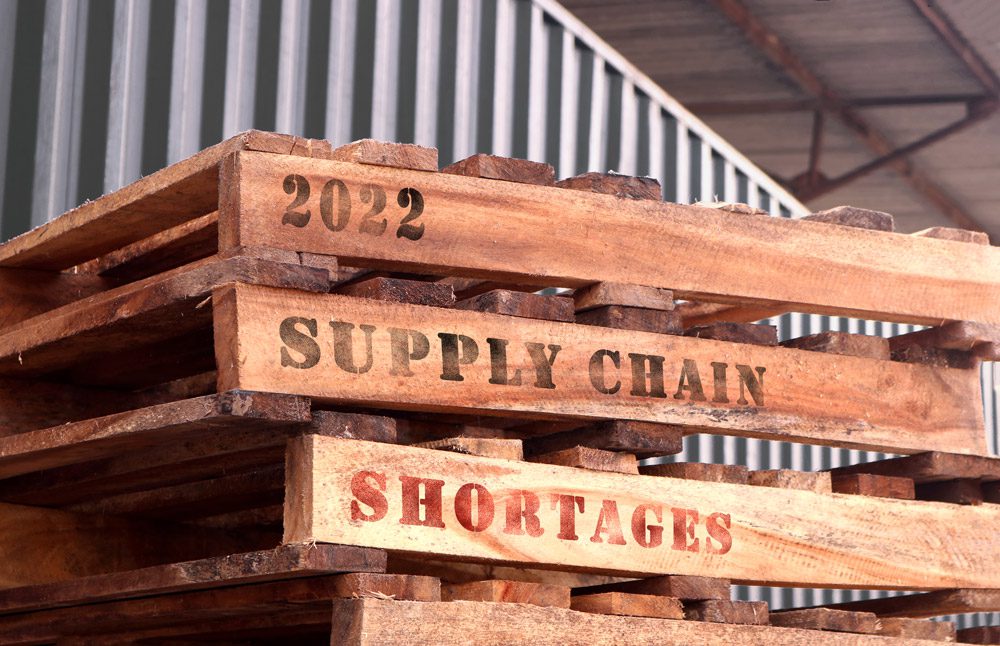In today’s economic climate, the faster consumers can receive their goods the better. Let’s face it: customers love instant gratification and the quicker a company replenishes its inventory the better. Due to the increase in online shopping and eCommerce brands, it’s never been easier or quicker for consumers to receive their items. The ease of access is a welcomed change for many merchants, but if business owners are not on top of their inventory management, it’s very possible to run into issues with items being out of stock. When this happens, and for most successful companies it will happen eventually, they have an important decision to make: put their inventory items on backorder or simply mark them as out of stock. Consumers may not understand the difference between these two inventory options, but for business owners, the choice can dramatically impact their sales and bottom line.
In this article, ShipCalm will answer the question, “What does backordered mean?” as well as cover the differences between backorder vs out of stock, the advantages of both options, and discuss the best ways to handle backorder fulfillment. With ShipCalm’s helpful guide, your business can make the best call on its inventory to help support future sales and keep your inventory in top-notch shape. This article will cover the following items:
Should You Take Backorders?
First things first: let’s clarify what seeing a backordered item means. An item being backordered means that the business has more orders for an item than it has inventory. Essentially, the demand is higher than the supply. This means that there is a backlog of orders that have yet to be shipped, and once the inventory has been replenished, the goods will be shipped accordingly. The lack of inventory might be due to the item needing to be created by the manufacturer or the item still being in production. For a customer that hasn’t yet ordered that item, a backorder situation isn’t ideal. However, for merchants, it allows their business to continue making sales on their inventory while sacrificing a timely shipment.
So should merchants take backorders? The answer depends on each company’s needs as well as the predicted timeline for inventory replenishment. While those products are not available for delivery, it’s attractive for merchants to continue racking up sales despite the hold-up. Let’s explore some of the advantages and disadvantages of taking backorders.
Pros of Taking Backorders
So what are the biggest attractive features of allowing backorders? In a nutshell: businesses don’t love pressing pause on their sales. There are also a few factors that might lead to backorders saving money in the long run, depending on the business’s unique inventory needs. Some of the substantial benefits of taking backorders include, but are not limited to:
- Save Money – Inventory storage and carrying costs can be costly depending on the company, and having an excess of an item is just as problematic as running out of it. By taking backorders, your business can have less inventory storage and carrying costs, which can save money down the line.
- Guaranteed Sales – When an item is marked as “out of stock” a customer will instantly look elsewhere for a similar product. By taking backorders, companies can continue making sales while also determining exactly how much of a product needs to be produced.
- Generate Excitement or Hype for Products – In terms of the psychological side of sales, when customers see that an item is backordered, they automatically think that it’s a hot-ticket item with high demand. Backorders can result in customers feeling afraid to miss out on your inventory, which generates a welcomed hype for high-demand items within your company’s inventory.
Cons of Taking Backorders
Now that we’ve considered some of the notable advantages of taking backorders, let’s dive into some of the downsides. Just because an item is logged as backordered doesn’t mean that businesses will still capture sales, especially for consumers that understand the complexities of backorders. Some of the biggest disadvantages of allowing your inventory to be backordered include:
- Lost and/or Canceled Sales – Some customers are unwilling to wait for the inventory to be restocked, meaning they’ll look around for competing merchants with a similar item in stock. Likewise, if the item is taking too long to be distributed, merchants run the risk of experiencing a large number of canceled orders.
- Lost Market Share – When customers go to a competing merchant, businesses run the risk of losing part of their market share. If items are frequently backordered, customer abandonment is much higher.
- Overstock – If your business has a large log of backorders, you run the risk of customers canceling their orders and accidentally overstocking your inventory based on the original sales. This leads to higher carrying fees and the need for additional warehouse space, which can all add up to profit losses down the road.
When To Stop Sales and the Potential Impact
Now that we understand the complexities of backorders, let’s explore the debate between marking an item as backordered vs. out of stock. For new businesses, simply stopping the sale of an inventory item might seem like the most logical option. The process is straightforward and guarantees that all orders are sufficiently shipped while also providing an easier process for tracking order fulfillment. However, stopping sales runs the risk of losing valuable customer retention and new customer attention. So when should businesses stop sales?
Businesses should mark an item as out of stock once the order fulfillment process for that product becomes more complicated than the potential sales are worth. Just because customers can still place orders doesn’t mean that the customer experience is a good one. That said, there are very few benefits of listing items out of stock. It’s the fastest way to guarantee your customers go to someone else for the same product. However, stopping sales doesn’t mean that a business has to lose sales later on. By setting up an option for customers to be alerted when an item is back in stock, merchants can hopefully still capture potential sales. These alerts can also help businesses build customer loyalty as well as allow them to collect valuable customer information for future sales.
How to Handle Backordered Products
To guarantee that your customers will place orders for a backordered product and prevent those orders from getting canceled, you’ll need to ensure that your backordered products are managed according to their sales. Inventory management is a fundamental element of any successful business, and backordered goods have a direct impact on that inventory. There are two major guidelines for handling backordered products: keeping your customers informed and having a streamlined backorder fulfillment process. Let’s go over both in more detail.
Keep Customers Informed
Put yourself in the customer’s shoes: if you’ve placed an order for an item that needs to be restocked, wouldn’t you want to know about how that order is going? Keeping customers informed about their backordered products is the best way to ensure they won’t cancel their order and head to one of your competitors. Staying in touch with your clientele is a great way to generate hype around the product, as well as generate interest in other areas of your inventory that are readily available. Plus, by staying in touch, businesses can more easily direct consumers to upcoming products that have yet to be released.
Backorder Fulfillment Process
Outside of customer relations, the backorder fulfillment process is paramount to your business’s success if you’ve decided to accept backorders. Inventory management and product forecasting are great ways to anticipate any increases in sales to prevent any items from being out of stock in the first place. Cross-docking is another valuable option for business owners. Cross-docking is an expedited fulfillment option that promises that backordered products are picked, packed, and delivered as efficiently as possible. When handling backorders, time is the biggest enemy, and by having a strong understanding of your business’ inventory management and implementing cross-docking practices, backorders can be handled much more efficiently.
Let ShipCalm Help You Tackle Your Backorder Issues Now!
Backordering is a great way to avoid halts in sales, but the way businesses manage those backorders is what determines their overall profits. By partnering with a third-party logistics company like ShipCalm, you can streamline and simplify your order fulfillment process across the board. Our affordable inventory management and order fulfillment services make accepting and fulfilling backorders a breeze so that business owners can instead focus on production and customer satisfaction. ShipCalm’s eCommerce logistics capabilities will help prevent products from ever being out of stock and manage inventory overall. Contact a ShipCalm team member today to simplify your order fulfillment process and see your business prosper long-term.

